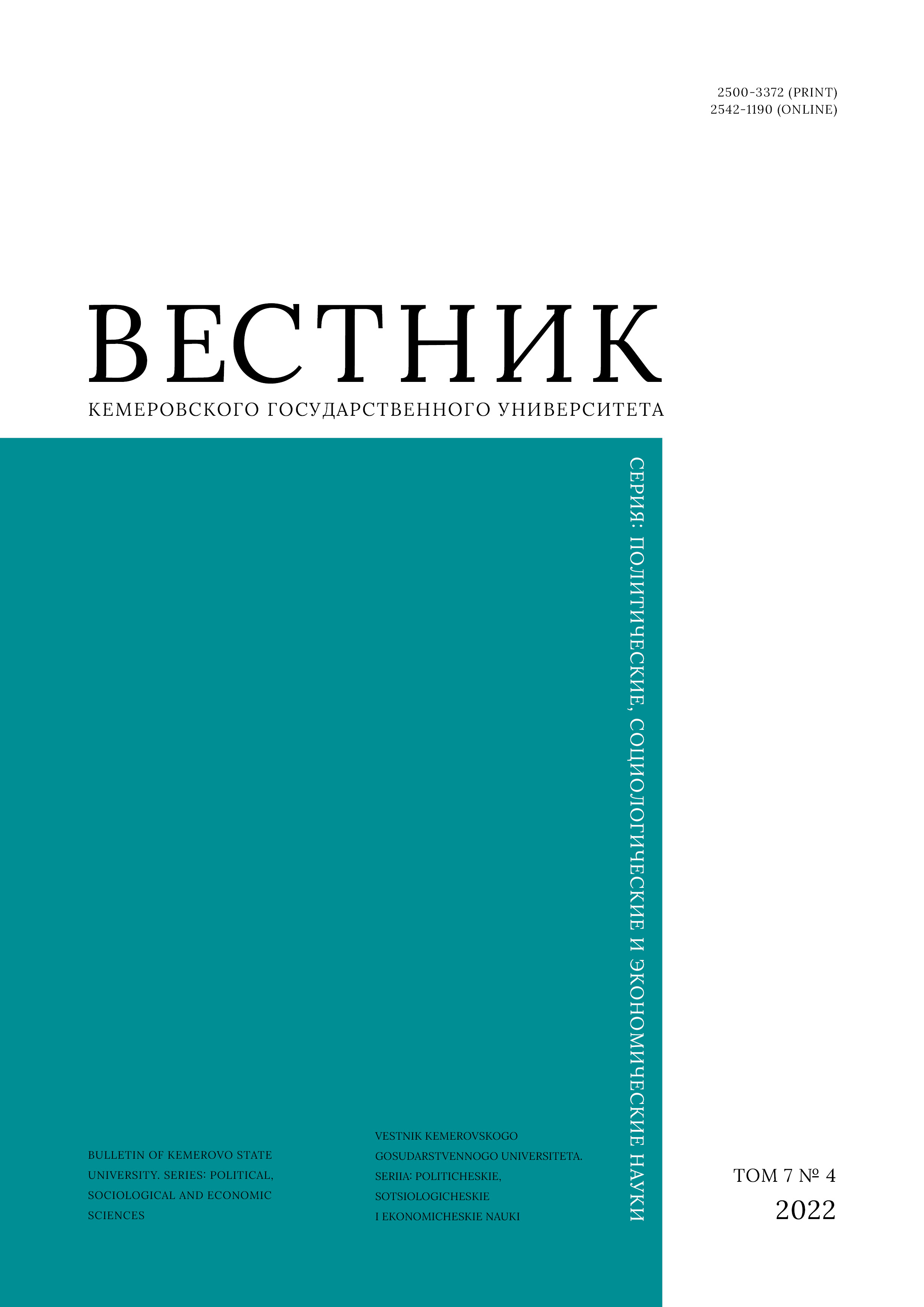Novosibirsk, Russian Federation
Infrastructure projects contribute to the development of regional transport and economy. This article features the impact of large-scale transport projects on economic growth. The author determined the relationship between investments in major transport projects and the consequences of their implementation. The study relied on such methods as generalization, classification, comparison, description, and mathematical statistics. One and the same large-scale transport projects are admired as beneficial and criticized as inefficient. Traditional views on investment usually provide only negative coverage. Therefore, large-scale transport projects need to be analyzed from different perspectives that meet regional and national interests. The original hypothesis was the dependence between the gross regional product and the fixed assets of transport organizations in the regions. The comprehensive analysis of this relationship in various regions of the Russian Federation proved the dependence between these parameters. A poor infrastructure was a deterrent to the regional economic growth. The author believes that the critique of large-scale infrastructure projects is unfounded. In fact, they contribute to the regional economic development, primarily in developing countries that are undergoing structural economic changes.
megaprojects, large-scale projects, railway projects, infrastructure projects, project efficiency assessment, infrastructure investments
1. Holmgren J., Merkel A. Much ado about nothing? - A meta-analysis of the relationship between infrastructure and economic growth. Research in Transportation Economics, 2017, 63: 13-26. https://doi.org/10.1016/j.retrec.2017.05.001
2. Jenks L. J. Railroads as an economic force in American development. The Journal of Economic History, 1944, 4(1): 1-20. https://doi.org/10.1017/S002205070008400x
3. Fogel R. W. A quantitative approach to the study of railroads in American economic growth: a report of some preliminary findings. The Journal of Economic History, 1962, 22(2): 163-197. https://doi.org/10.1017/S0022050700062719
4. Canning D., Fay M. The effects of transportation networks on economic growth. N.Y.: Columbia University: Department of Economics Discussion Paper, 1993, 47. https://doi.org/10.7916/D80K2H4N
5. Aschauer D. A. Is public expenditure productive? Journal of Monetary Economics, 1989, 23(2): 177-200. https://doi.org/10.1016/0304-3932(89)90047-0
6. Kirilyuk I. L. Models of production functions for the Russian economy. Computer Research and Modeling, 2013, 5(2): 293-312 (In Russ).
7. Von Thünen J. H. Der Isolierte Staat in Beziehung auf Landwirtschaft und Nationalökonomie. Berlin: Akademie-Verlag, 1990, 671.
8. Christaller W. Die zentralen Orte in Süddeutschland. Jena: Gustav Fischer, 1933, 331.
9. Lösch A. Die räumliche Ordnung der Wirtschaft. Jena: Gustav Fischer, 1940, 348.
10. Boothroyd P., Knight N., Eberle M., Kawaguchi J., Gagnon C. The need for retrospective impact assessment: the megaprojects example. Impact Assessment, 1995, 13(3): 253-271. https://doi.org/10.1080/07349165.1995.9726097
11. Oosterhaven J., Elhorst J. P. Indirect Economic Benefits of Transport Infrastructure Investments. Across the border: building upon a quarter century of transport research in the Benelux. Antwerp: De Boeck, 2003, 143-162.
12. Demurger S. Infrastructure development and economic growth: an explanation for regional disparities in China? Journal of Comparative Economics, 2001, 29(1): 95-117. https://doi.org/10.1006/jcec.2000.1693
13. Barro R. J. Government spending in a simple model of endogenous growth. Journal of Political Economy, 1990, 98(5-2): 103-125. https://doi.org/doihttps://doi.org/10.1086/261726
14. Serikov P. Y. Regarding investments in infrastructure sectors and acceleration of economic growth. Science & Technologies: Oil and Oil Products Pipeline Transportation, 2017, 7(6): 72-81. (In Russ.)
15. Behrens W., Hawranek P. M. Manual for the preparation of industrial feasibility studies. Vienna, 1991, 387.
16. Shcherbanin Yu. A. Transport and economic growth: interconnection and impact. Journal of Eurasian Economic Integration, 2011, (3): 65-78. (In Russ.)
17. Nudelman R. I. Problems of planning reproduction of fixed assets of transport. Problems of forecasting and optimization of transport operation, eds. Kontorovich L. V., Livshits V. N. Moscow: Nauka, 1982, 129-168. (In Russ.)
18. Belousov M. P. Profitability of railway construction from the point of view of the national economy. Moscow: Transpechat NKPS, 1927, 60. (In Russ.)
19. Khachaturov T. S. Economy of transport. Moscow: AN SSSR, 1959, 587. (In Russ.)
20. Ivanter V. V., Mikhailov V. V., Pekhterev F. S., Uziakov M. N., Zamkovoi A. A., Shirov A. A., Shestakov P. A., Popova E. V., Leshchev M. V. Using the method of intersectoral balance for scientific substantiation of the strategic development of the Russian railway system. Moscow: UP Print, 2015, 208. (In Russ.)
21. Development of the methodology of forecasting the Russian economy on the basis of the intersectoral and interregional complex: Proc. Seminar, Moscow, 9 Dec 2014, eds. Zamkova A. A., Shestakova P. A., Pavlova O. V. Moscow: Institute of Economics and Transport Development, 2014, 115. (In Russ.)
22. Economic aspects of the development of the transport strategy of Russia: Proc. Transport Strategy Center meeting, 10-11 Nov 2003, ed. Suslov V. I. Novosibirsk: IEOPP, 2003, 59. (In Russ.) EDN: https://elibrary.ru/QQDINX
23. Winston C. Efficient transportation infrastructure policy. Journal of Economic Perspectives, 1991, 5(1): 113-127. https://doi.org/10.1257/JEP.5.1.113
24. Schultze C. L. The Federal Budget and the Nation's Economic Health. Setting National Priorities: Policy for the Nineties, ed. Aaron J. H.. Washington, DC: Brookings Institution Press, 1990, 19-63.
25. Taleb N. N. Antifragile: Things That Gain from Disorder. Random House, 2012, 544.
26. Vickerman R. W. The Channel Tunnel and regional development: a critique of an infra-structure-led growth project. Project Appraisal, 1987, 2(1): 31-40. https://doi.org/10.1080/02688867.1987.9726592
27. Anguera R. The Channel Tunnel - An Ex-post Economic Evaluation. Transportation Research Part A: Policy and Practice, 2006, 40(4): 291-315. https://doi.org/10.1016/J.TRA.2005.08.009
28. Eisner R. Infrastructure and Regional Economic Performance: Comment. New England Economic Review, Sep / Oct 1991, 47-58.
29. Munnell A. H., Cook L. M. How does public infrastructure affect regional economic performance? New England Economic Review, 1990, 34: 11-33.
30. Vickerman R. W., Chen C. Can transport infrastructure change regions’ economic fortunes? Some evidence from Europe and China. Regional Studies, 2016, 51(1): 144-160. https://doi.org/10.1080/00343404.2016.1262017
31. Flyvbjerg B., Buzelius N., Rothengatter W. Megaprojects and risk: an anatomy of ambition. Cambridge: Cambridge University Press, 2003, 215. https://doi.org/10.1017/CBO9781107050891
32. Kibalov E. B., Buzulutskov V. F., Glushchenko K. P., Piataev M. V., Sizov A. N., Shibikin D. D. Evaluation of the public effectiveness of large-scale railway projects in a situation of uncertainty: a non-systemic approach. Novosibirsk: STU, 2020, 155. (In Russ.)
33. Koschatzky K. A river is a river-cross-border networking between Baden and Alsace. European Planning Studies, 2000, 8(4): 429-449. https://doi.org/10.1080/713666422
34. Flyvbjerg B., Skamris M. K., Buhl S. Underestimating costs in public works projects: error or lie? Journal of the American Planning Association, 2002, 68(3): 279-295. https://doi.org/10.1080/01944360208976269
35. Flyvbjerg B. What you should know about megaprojects and why: an overview. Project Management Journal, 2014, 45(2): 6-19. https://doi.org/10.1002/pmj.21409
36. Titman S., Wei K. C. J., Xie F. Capital investments and stock returns. Journal of Financial and Quantitative Analysis, 2004, 39(4), 677-700. https://doi.org/10.1017/S0022109000003173
37. Evans P., Karras G. Is Government Capital Productive? Evidence from a Panel of Seven Countries. Journal of Macroeconomics, 1994, 16(2), 271-279. https://doi.org/10.1016/0164-0704(94)90071-X
38. Holtz-Eakin D., Schwartz A. E. Infrastructure in a structural model of economic growth. Regional Science and Urban Economics, 1995, 25(2): 131-151. https://doi.org/10.1016/0166-0462(94)02080-Z
39. Rokicki B., Stępniak M. Major transport infrastructure investment and regional economic development - An accessibility-based approach. Journal of Transport Geography, 2018, 72: 36-49. https://doi.org/10.1016/j.jtrangeo.2018.08.010
40. Yakunin V. I. The role of infrastructure projects in the modern public policy. Political Science (RU), 2017, (S): 15-40. (In Russ.)

















